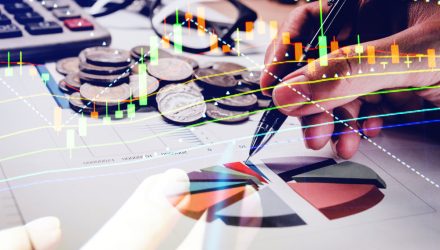For Innovator ETFs, a sizable portion of its year-to-date flows of approximately $350 million came in last week as investors looked to its Defined Outcome ETF strategies with built-in buffers as markets plummeted.
In total, the Innovator Defined Outcome ETF complex has gathered more than $2 billion in total assets.
Bruce Bond, CEO of Innovator ETFs, said one of the benefits of Defined Outcome ETFs is that market volatility typically contributes positively to upside caps, providing investors greater upside participation over the next one-year outcome period.
“This is exactly what we witnessed over the past week,” Bond said.
He said the March series of S&P 500 Buffer ETFs (BMAR, PMAR and UMAR) all came to market with higher upside caps.
“This unique feature (greater upside potential during volatile times) is in stark contrast to most risk management strategies, which typically reduce market-exposure as volatility increases,” he said. “Defined Outcome ETFs allow investors to stay invested in the market, regardless of which direction the market is going. We saw this play out during the last week in February. Over fears of the coronavirus, droves of investors fled the market; and many even had trouble accessing online accounts to cash out due to the demand to do so. But what if those investors remained invested all along, but with a built-in buffer? Would they have rushed for the exits so quickly? Likely not.”
Bond said its March Series of the Defined Outcome ETFs launched today (March 2) in the midst of the sell-off, and investors benefitted from that in terms of the cap they were able to obtain.
“The starting caps for the Innovator S&P 500 Buffer ETF (BMAR), Power Buffer ETF (PMAR), and Ultra Buffer ETF (UMAR) were 16.14%, 11.01% and 7.96%, respectively—quite a bit higher than some of the other defined outcome offerings that launched during less turbulent times,” he said. “For investors who jumped in, they benefit from a higher than average level of upside participation, with a built-in buffer of 9%, 15% or 30%, over the outcome period.”
And for those investors who did ride the market down, Bond said they were seeing several of them moving into defined outcome ETFs as well, knowing that they may be able to recover a portion of their loss, should markets remain down, or rebound over the remainder of the outcome period.
Over the past decade, the investment landscape has attempted to manage market risk without sacrificing growth through an increased focus on low volatility and market-timing strategies.
However, even these strategies may still be exposed to periods of systematic risk (e.g., global crisis, large interest rate movements, recessions, and wars, to name a few). This played out last week, when the threat of a global virus sent markets plummeting. Systematic risk events have a low probability of occurrence, but they can have a significant negative impact on portfolio value if they occur, because these events affect the whole “system.”
Bond said they believe a clearer approach to hedging market risk exists, called Defined Outcome Investing.
“In 2018 Innovator launched the world’s first series of Defined Outcome ETFs, which seek to provide investors with equity market appreciation, up to a cap, and reliable downside buffer levels over a specified period,” he said. “In other words, investors can now know what their upside potential is, downside risk management level, and outcome period (i.e., the amount of time the investment should be held to realize these parameters), all before investing.”
Historically, Bond said the common answer to overcoming portfolio volatility and large portfolio losses has been to stay invested in the market; continue saving and investing in your portfolio across all market conditions; when the market goes down, ride out the storm—eventually growth will return and the damage to your portfolio will be repaired.
“We believe this maxim is absolutely correct; and now, adding a buffer to your portfolio may help you stay invested for the long-term,” he said.
Last week was a historic one for markets, and many advisors are actively fielding calls from their clients, looking for guidance. In a special 1-hour webinar this Wednesday, ETF Trends will discuss how various hedging and risk management strategies have performed so far this year, and how advisors should be thinking about positioning for the coming year. Click here to learn more and register for free.








